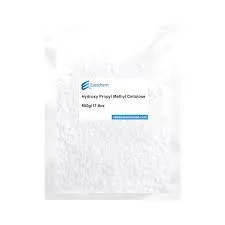
lis . 09, 2024 03:14 Back to list
Methyl Hydroxyethyl Cellulose Applications and Benefits in Modern Industries
Understanding Methyl Hydroxyethyl Cellulose (MHEC) Properties and Applications
Methyl Hydroxyethyl Cellulose (MHEC) is a semi-synthetic polymer derived from cellulose, a natural polymer found in the cell walls of plants. As an innovative derivative, MHEC has garnered significant attention in various industries due to its unique properties and versatility. This article explores the characteristics of MHEC, its applications, and its importance in modern formulations.
Properties of MHEC
MHEC is characterized by its white or off-white powder appearance, which is soluble in water, forming a clear, viscous solution. The key attributes that make MHEC particularly valuable include its thickening, gelling, and film-forming abilities. Its solubility and viscosity can be tailored by adjusting the degree of substitution, which refers to the number of hydroxyl groups on the cellulose chain that have been replaced with methyl and hydroxyethyl groups. This makes MHEC a highly customizable material suitable for various formulations.
One of the remarkable properties of MHEC is its high degree of water retention, which enables formulations to maintain moisture over extended periods. Additionally, MHEC exhibits excellent stability across a range of temperatures and pH levels, which further enhances its applicability in various environments.
Applications of MHEC
1. Construction Industry MHEC is widely used as an additive in cement and mortar formulations. Its thickening properties improve the workability of these materials, making them easier to apply. Moreover, MHEC enhances water retention, which is crucial for the curing process, ensuring that the mixture remains workable for longer periods and achieves optimal strength.
methyl hydroxyethyl cellulose mhec

2. Paints and Coatings In the paints and coatings industry, MHEC serves as a thickener and stabilizer. It improves the consistency, flow, and application characteristics of paint, ensuring a smooth finish. Additionally, MHEC enhances the paint's open time, allowing for better application and manipulation before it dries, which is especially important in artistic and professional applications.
3. Food Industry MHEC is employed in the food industry as a thickening agent and stabilizer. It is commonly used in products such as sauces, dressings, and dairy products, where it improves texture and mouthfeel. Its ability to retain moisture also contributes to the shelf life of food products by preventing drying out.
4. Personal Care Products The cosmetic and personal care industry utilizes MHEC in formulation due to its excellent film-forming and gelling properties. It is found in products like lotions, creams, shampoos, and conditioners, where it enhances viscosity and provides a desirable texture, making the products more appealing to consumers.
5. Pharmaceuticals In the pharmaceutical sector, MHEC is used as a binding agent and thickener in tablet formulations, as well as a component in controlled-release drug delivery systems. Its biocompatibility and ability to form gels at various pH levels make it a valuable ingredient in the formulation of topical and oral medications.
Conclusion
Methyl Hydroxyethyl Cellulose (MHEC) is a multifunctional hydrocolloid that has become an essential ingredient across multiple industries due to its unique properties. Its ability to improve texture, stability, and performance in various formulations underscores its importance in modern product development. As industries continue to seek innovative solutions, MHEC stands out as a versatile and effective additive that meets the diverse needs of manufacturers and consumers alike. With ongoing research and development, the potential applications of MHEC are likely to expand, making it a critical player in the future of product formulation and design.
-
Unlocking the Benefits of HPMC Products: A Gateway to Versatile Applications
NewsAug.07,2025
-
Unleashing the Potential of HPMC Ashland: A Comprehensive Look
NewsAug.07,2025
-
Tile Bonding Cellulose: The Key to Superior Adhesion and Durability
NewsAug.07,2025
-
Hydroxypropyl Methylcellulose Powder: The Versatile Component in Modern Pharmaceuticals
NewsAug.07,2025
-
Hydroxyethyl Cellulose: The Versatile Solution for Various Industries
NewsAug.07,2025
-
Hydroxyethyl Cellulose (HEC): The Versatile Polymer for Various Applications
NewsAug.07,2025







